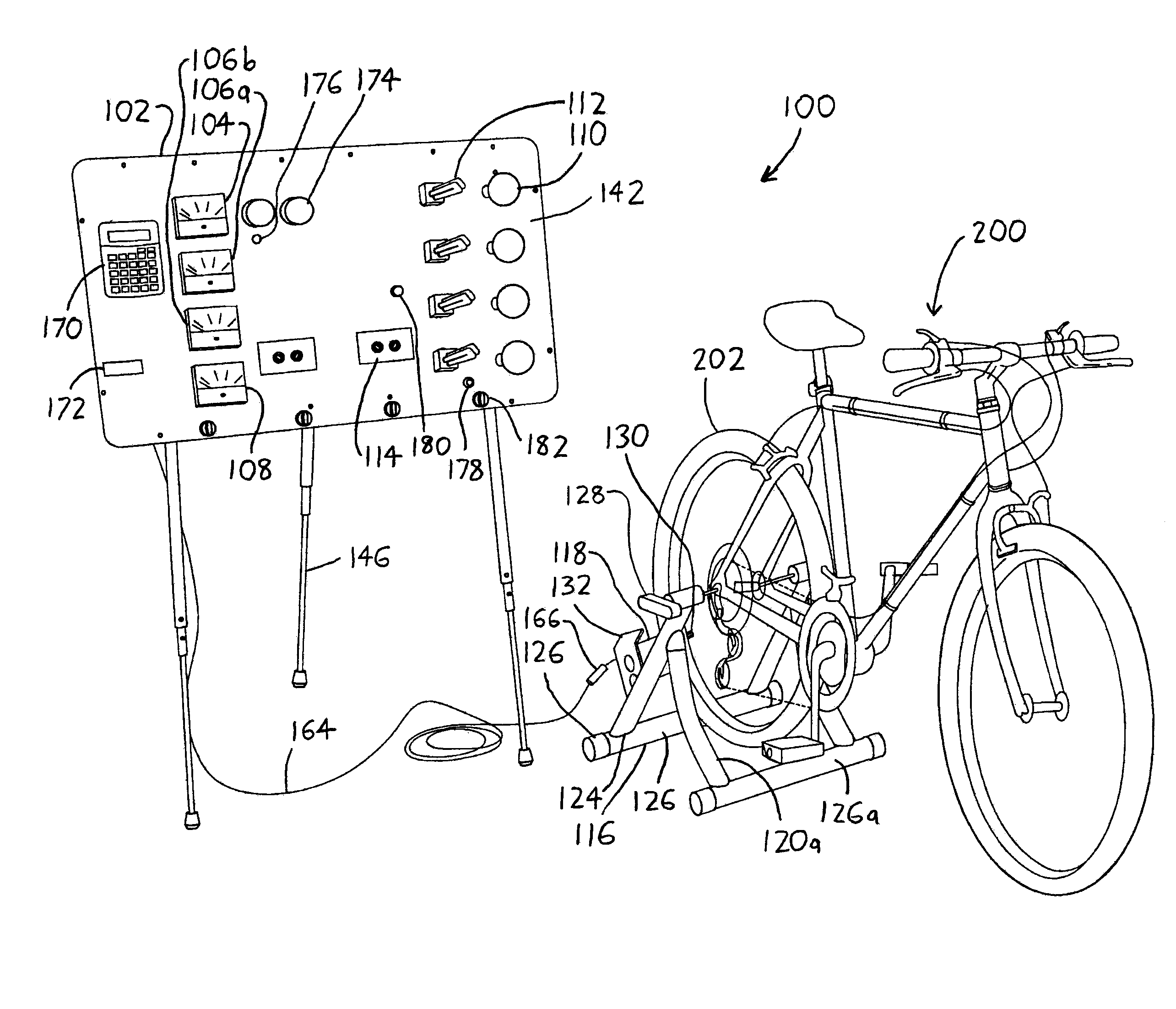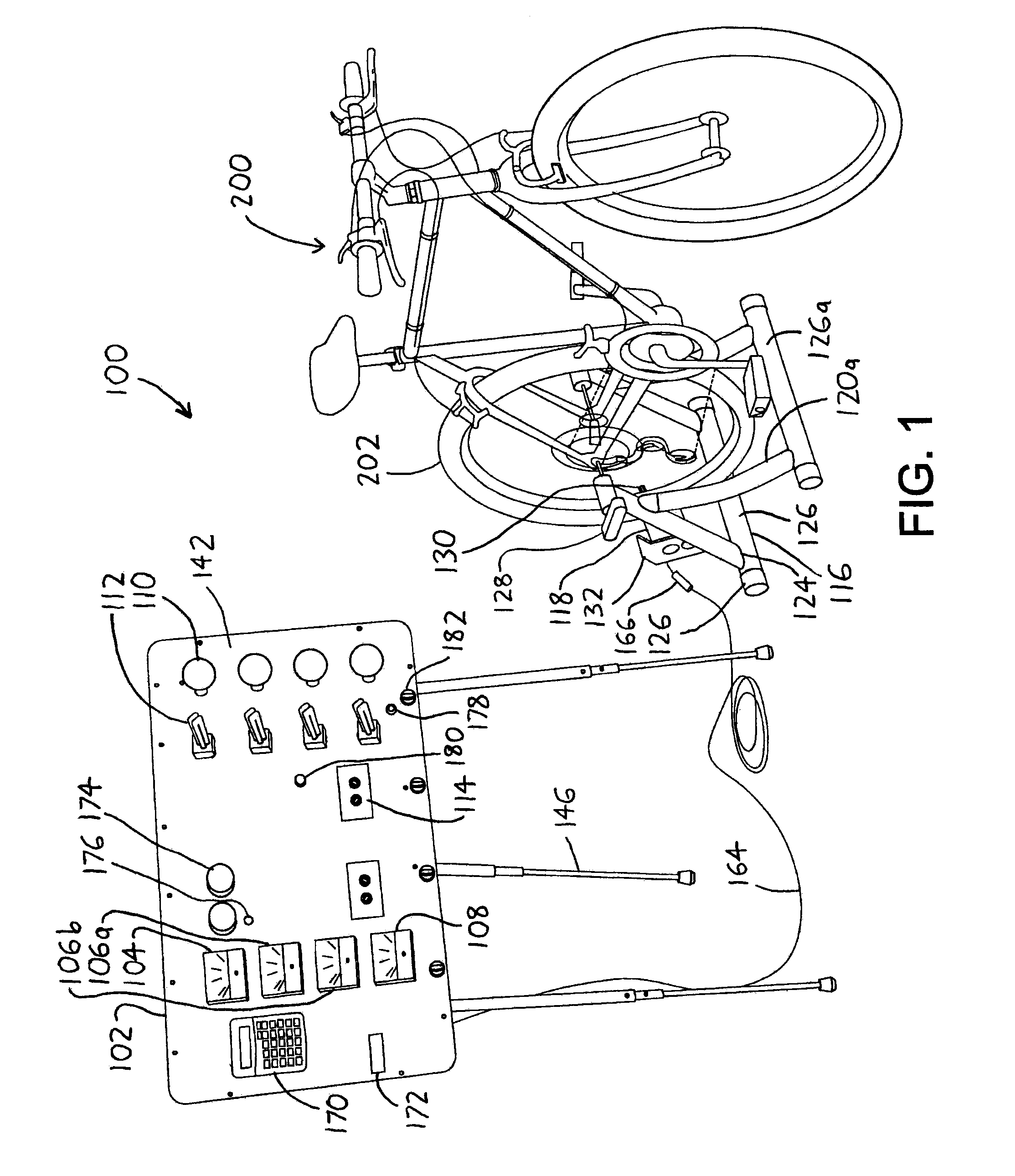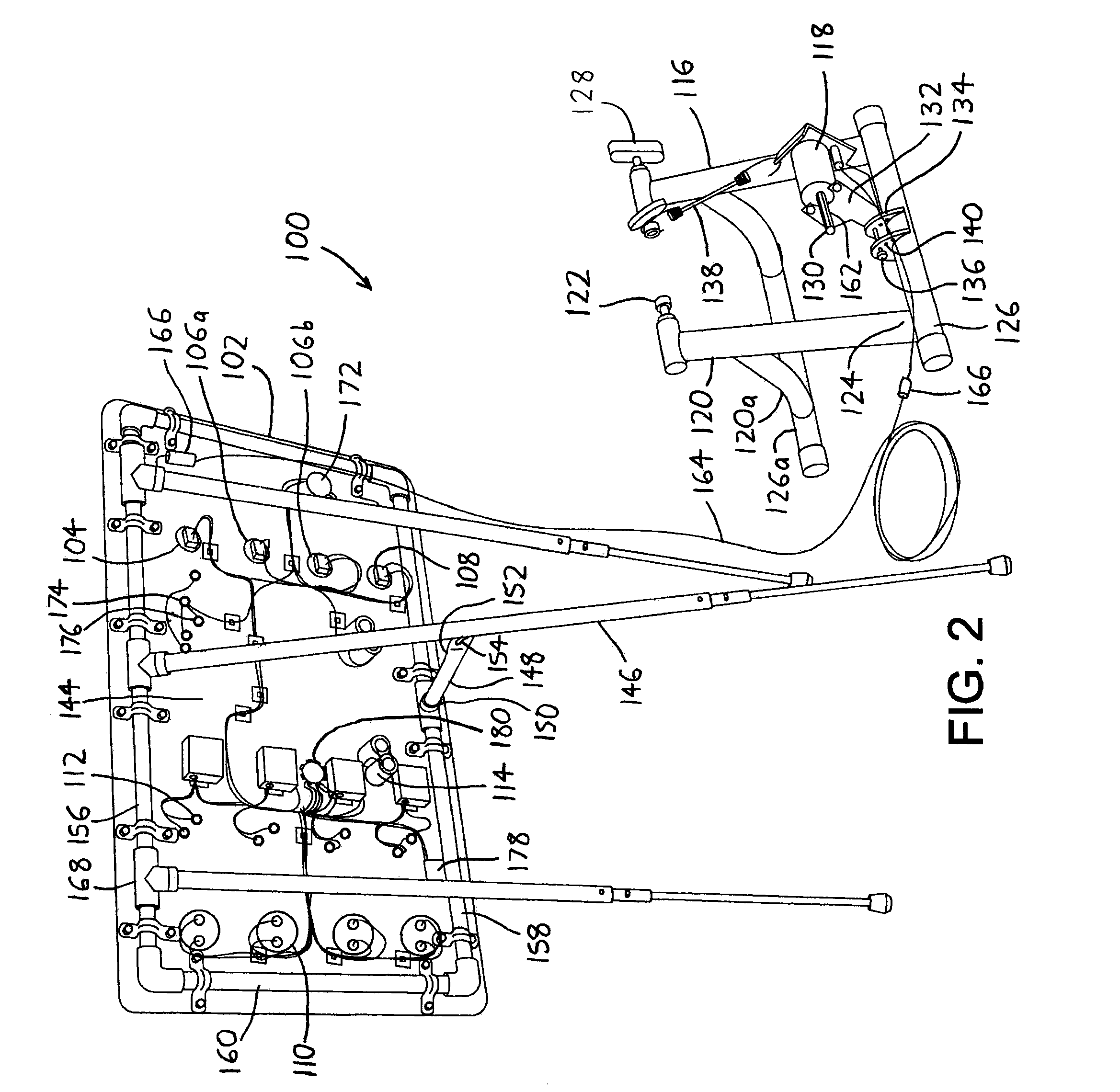Educational electrical generation kit
a technology of electrical generation and educational displays, applied in the field of educational displays, can solve the problems of limited utility of displays, failure to capture the attention of many viewers, and troublesome setup and teardown efforts
- Summary
- Abstract
- Description
- Claims
- Application Information
AI Technical Summary
Benefits of technology
Problems solved by technology
Method used
Image
Examples
Embodiment Construction
[0016]To elaborate on the discussion above, following are further details regarding the preferred exemplary version of the electrical generation kit 100 illustrated in the drawings, as well as selected modifications that can be made to the kit 100.
[0017]The bicycle wheel support 116 may be capable of folding into a compact configuration, with the supplementary support legs 120a and supplementary support base 126a being pivotable on the support legs 120 to unfold to the position illustrated in the drawings (at which point they might be prevented from unfolding further without encountering interference). Thus, along with the pivotable generator mount 132, the bicycle wheel support 116 can be folded into a relatively flat state and can be stowed in a carrying case / suitcase along with the display board 102 for easy transport. The bicycle wheel support 116 is preferably made out of steel or other metals for sake of strength, though it could be made of composite or plastic materials inste...
PUM
 Login to View More
Login to View More Abstract
Description
Claims
Application Information
 Login to View More
Login to View More - R&D
- Intellectual Property
- Life Sciences
- Materials
- Tech Scout
- Unparalleled Data Quality
- Higher Quality Content
- 60% Fewer Hallucinations
Browse by: Latest US Patents, China's latest patents, Technical Efficacy Thesaurus, Application Domain, Technology Topic, Popular Technical Reports.
© 2025 PatSnap. All rights reserved.Legal|Privacy policy|Modern Slavery Act Transparency Statement|Sitemap|About US| Contact US: help@patsnap.com



